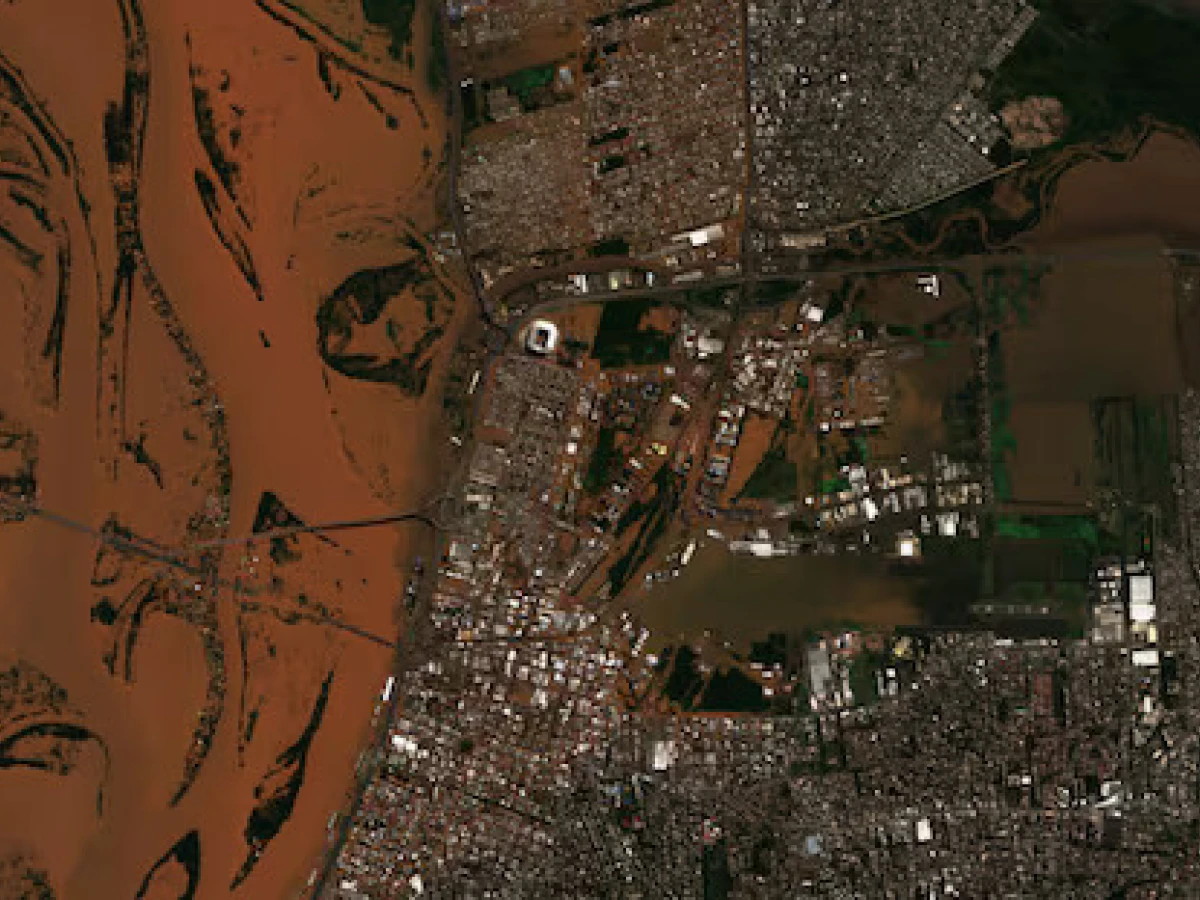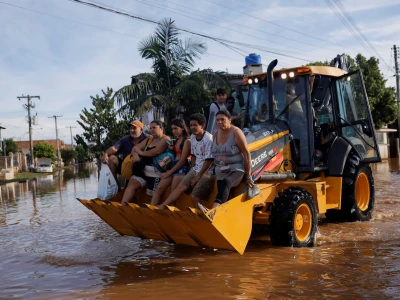
Brazil floods hit food silos, disrupt routes to major grains port
The unprecedented climate event killed livestock and caught farmers in the final stages of the corn and soy harvests.
SAO PAULO, May 7 (Reuters) - Heavy flooding in southern Brazil has hit food storage facilities in lower areas while hampering the shipping of grains to port, jeopardizing the nation's exports and wreaking havoc to the economy of Rio Grande do Sul state, a large soy, rice, wheat and meat producer.
Anec, an association representing global grain exporters, said on Tuesday access to the port of Rio Grande had been disrupted as a local rail line stopped operating. The group, which represents firms like Cargill and Bunge (BG.N), opens new tab, also cited road blockades forcing grain trucks to travel an extra 400 kilometers (248.55 miles) through alternative routes to reach the port, increasing freight costs.
The unprecedented climate event, which left entire towns under water and destroyed critical infrastructure in the capital and rural areas, also killed livestock and caught farmers in the final stages of the corn and soy harvests, clouding the outlook for national grain production in 2023/2024.
The escalating crisis also led competing meatpackers to join forces to circumvent logistical hurdles brought about by the heavy downpours, which disrupted water and electricity services to 1.4 million people, the state's Civil Defense agency said.
According to a local meat lobby, opens new tab, the meat companies began sharing resources to speed up delivery of feed and water supplies to chicken and hog farms, where an unspecified number of animals have perished due to the devastating floods.
Paulo Pires, president of Rio Grande do Sul farm lobby Fecoagro, said it was too early to know how much grain production had been lost due to the flooding that hit silos around river areas.
"They are large silos, so it is significant, but it is really difficult to quantify this," Pires said by telephone.
Gedeao Pereira, president of agriculture lobby Farsul, confirmed isolated cases of food silos being hit but floods, but said they could dry in time and hence losses would be minimized. Pereira said he is more concerned with crops like soy which farmers have yet to harvest in Rio Grande do Sul, especially in center and southern areas.
Earlier on Tuesday, the state's port authority said Rio Grande was "operating normally" as its terminals had not been affected by the rise in the level of the Laguna dos Patos lagoon.
At around 8 a.m. the current was ebbing in the access channel Rio Grande port, allowing water to flow at a speed of about three knots, the equivalent of 5.55 kilometers per hour, the authority noted. The tide table indicated a level of 90 cm above normal.
Cargonave, a shipping agency, confirmed slower grain arrivals at Rio Grande port, which last year had exported 10.4 million tons of soybeans and 3.6 million tons of soymeal.




